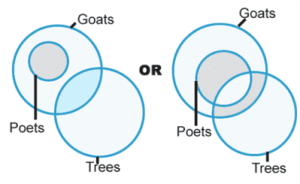Time and Work for CAT is an important topic to prepare for the Quantitative Aptitude Section of the exam. The topic revolves around the complexities of managing your time efficiently. Simultaneously, it helps you understand the importance of time management.
It is a no-brainer that time is of prime importance in the business world. Everything focuses on saving your time efficiently. From meeting deadlines for your projects and assignments on time, to getting a deal done in a particular timeline. The inclusion of this topic in the CAT exam aims to test the same abilities of the candidate in order to prepare them for real world problems.
That’s why, we urge you to not waste your time and use it to the best of your capability to reap better scores.
In order to save your time, we have curated this 5-min article. It will help you understand how to approach Time and work problems.
Let’s dig in.
Approach for Time and Work
Time and work questions in CAT appear in different forms and are asked in tricky ways to confuse you. Although this might baffle you at first, with the development of concepts in a step-wise manner it’ll become easier for you.
Now, let’s consider, Emma, a baker who owns a pastry shop called Emma’s Sweet Pâtisserie in Lyon. A customer gave her an order to make 2 wedding cakes in 4 days on Monday. How much work will she have to complete in a single day to complete the order in 4 days? How much time will it take to make a single cake?
The answer to this question is quite simple. Let’s take the unitary method to understand it. If Emma takes 4 days to complete 2 cakes, that is, her work. Then, she complete a quarter, that is, 1/4th of her work in day. Imagine that you have a pie with 4 pieces to eat in 4 days. Then, to eat it in 4 days, you’ll have to eat only one piece every day. Likewise, Emma’s complete work comprises 2 cakes. Then, half of her complete work is a single cake. If she completes a quarter of her order every day, then she’ll be able to make a cake in two days.
Let’s generalize this example. Then, we can apply it to other similar problems.
If we are given a certain ‘n’ number of days to complete a work, then we can calculate the amount of work done in a single day. Consequently, the work done in a single day will be 1/nth of the complete work assigned. Now, we can multiply by the objects or things we had to make. So, multiply 2 cakes with a quarter of a day’s work then, we’ll get that in a single day she can complete half of a cake. Therefore, Emma can make 50% of a cake in a single day.
Two workers’ scenario
If A does a work in ‘a’ days, then in one day A does
→ 1/a of the complete work
Likewise, If B does a work in ‘b’ days, then in one day B does
→ 1/b of the complete work
Then, in one day, if A and B work together, then the combined work will be
1/a + 1/b
⇒ (a+b)/ab
Note: we consider the complete work to be done as a single unit of work here.
Alternate Approach: Percentages
Instead of assuming total work as a single unit of work, we can assume total work as 100% work. This approach can be used when they ask you the “percentage” that can be done in ‘n’ number of days.
If A does a work in ‘a’ days, then in one day A does
→ (100/a)% of the work
If B does a work in ‘b’ days, then in one day B does
→ (100/b)% of the work
Then, in one day, if A and B work together, then their combines work is (100/a)% + (100/b)%
The Concept of Negative Work
Let’s consider that A and B are working to make a cake while C is working to eat the cake. In such a case, the cake is being made by A and B while it is being eaten by C. Here, if we consider the work as making the cake, we can say that C is doing negative work.
Example
Q. A can make a cake in 5 days and B can make a cake in 2 days, while C can completely eat it in 10 days. If they start working at the same time, in how many days will the work be completed?
Solution
The total work done by A, B and C in a day = A’s work + B’s work − C’s work
⇒ 20% +50% − 10% = 60% work in a day
Hence, the work will be completed in 1 and 2/3rd’s of a day.
The concept of negative work typically appears in problems based on pipes and cisterns, where there are inlet pipes and outlet pipes/leaks which work against each other.
Our cat coaching kolkata team hopes that your doubts regarding the Time and Work topic has been cleared. If not, do not hesitate to reach out to us.
Best of luck for your exams!






